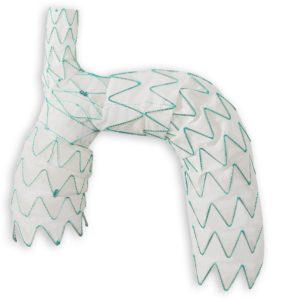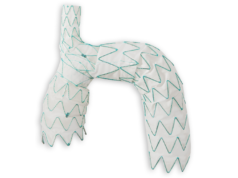
Positive two-year results from a prospective multicentre premarket study including 25 patients treated with the Nexus aortic arch stent graft (Endospan) were presented today at the 2019 Vascular Interventional Advances conference (VIVA) in Las Vegas, USA (4–7 November).
Technical success was achieved for all intended Nexus introductions and deployments (100%). At 30 days, two (8%) patients died from cardiac causes and two (8%) patients showed non-disabling stroke, which resolved completely within 30 days.
During a mean follow-up of 25 months, there was one additional procedure-related mortality from stroke, and one patient was converted to open surgery following retrograde type A dissection. During follow-up, aneurysm size decreased or remained stable in 96% of the patients, with no aneurysm-related deaths.
All patients had aneurysm size > 55 mm and were considered high risk for conventional open arch surgery by a multidisciplinary team. Indications for treatment were aneurysm (15 [60%] patients) or dissection (10 [40%] patients), including seven patients previously treated surgically for type A dissection. Thirteen (52%) patients had prior thoracic aortic surgery. Supra-aortic bypasses were performed prior to Nexus implantation.
Mid-term results at a mean 25-month follow-up are stable without any material failure or stent graft issues. However, more experience and longer follow-up are necessary to confirm these promising mid-term results.
The off-the-shelf Nexus system is the first CE mark–approved branched stent graft for the aortic arch. Design features that assist in minimizing manipulations may explain the high technical success, low rate of neurologic complications, and durability, allowing safe endovascular repair.
Nexus is a modular stent graft introduced via a 20-F delivery system with double flushing ports, which allows efficient de-airing. The main module is deployed over an axillofemoral guidewire to extend from the brachiocephalic trunk to the descending aorta and is combined with a precurved ascending module that conforms to the ascending aorta.












